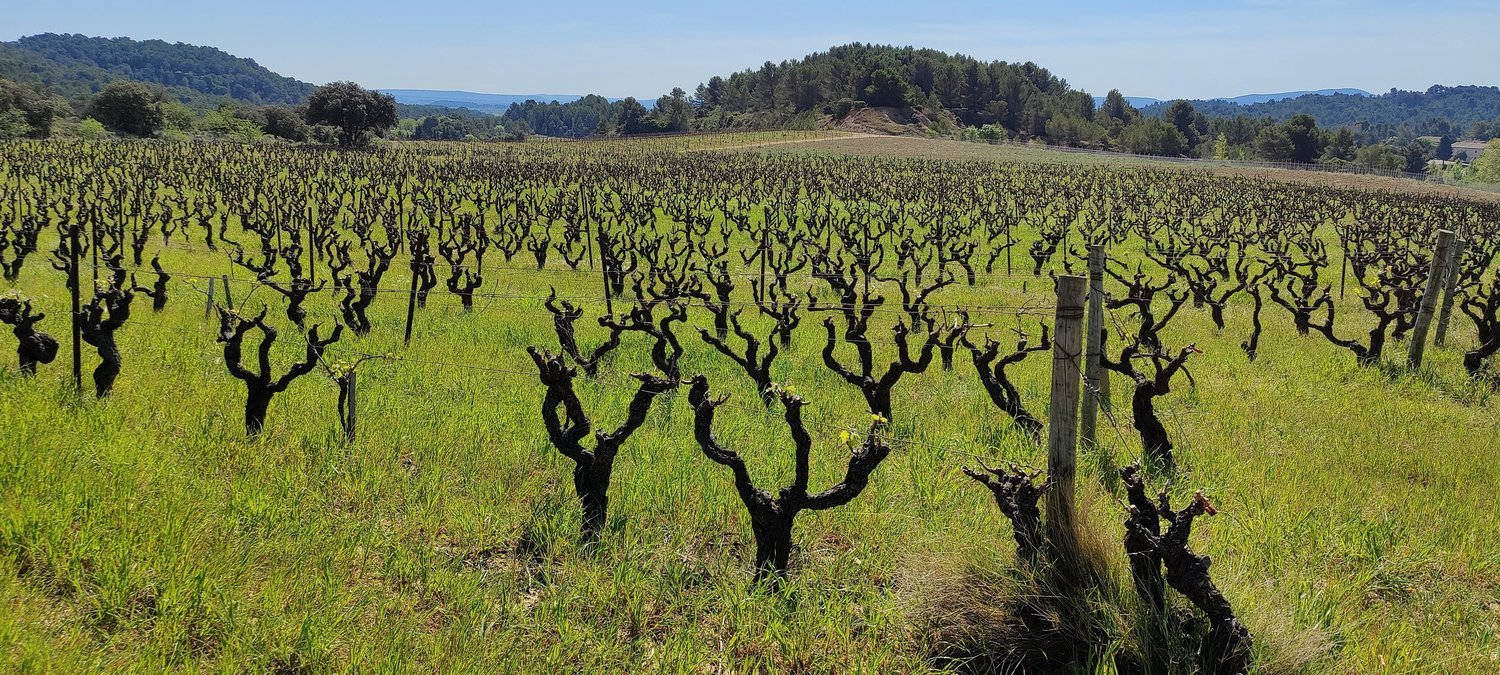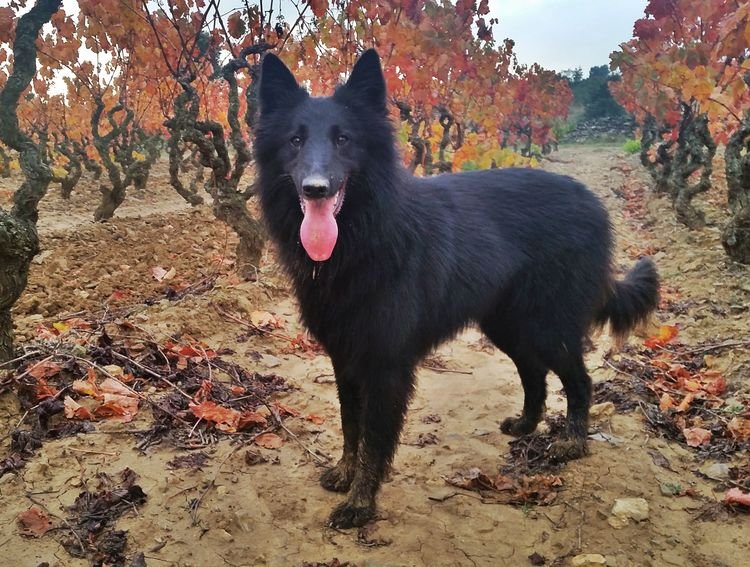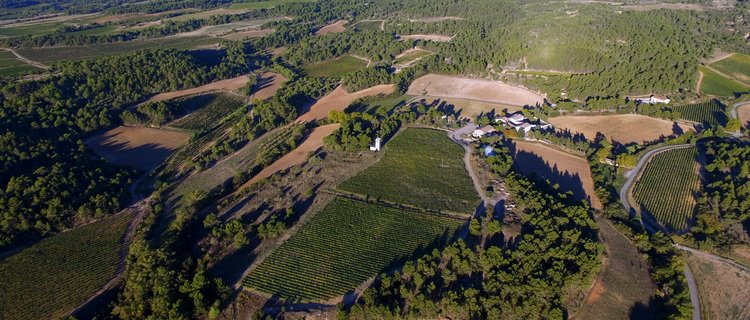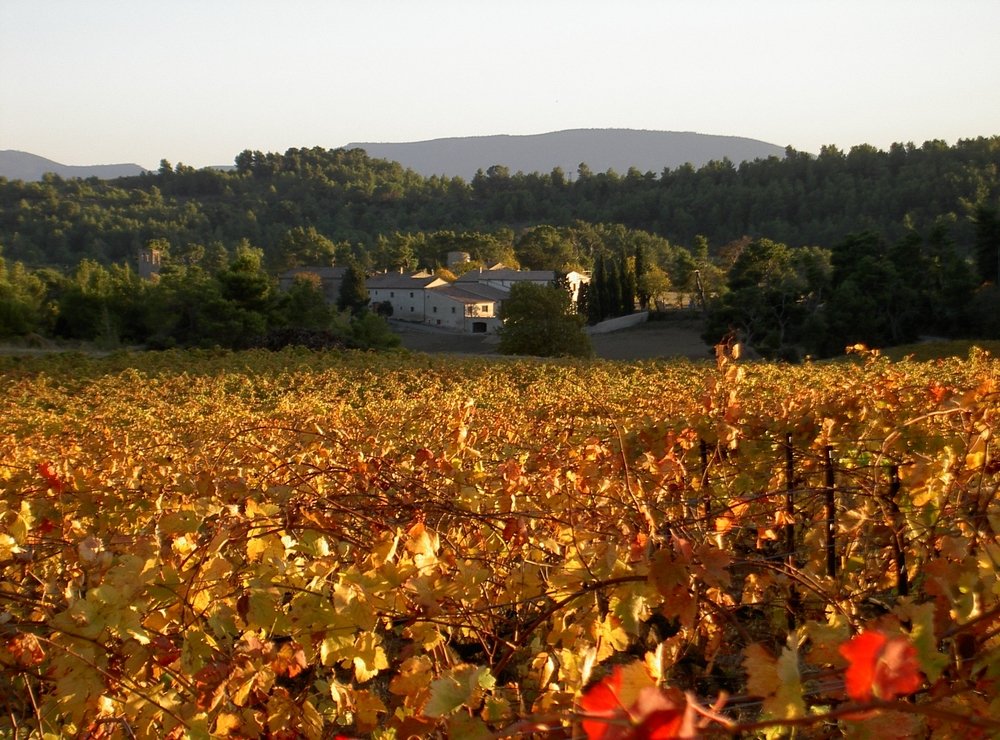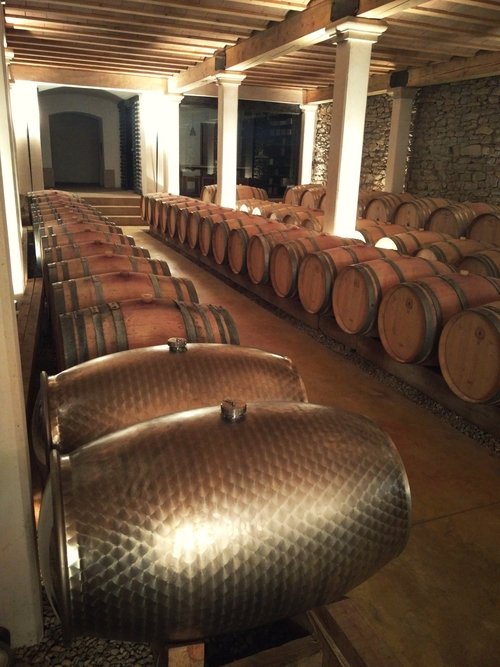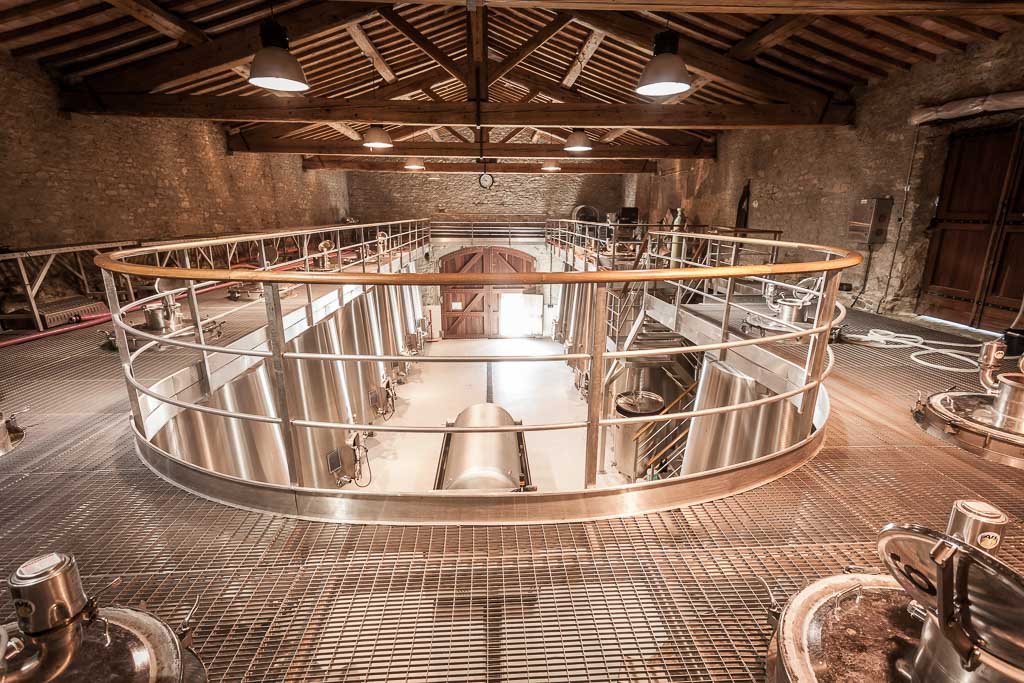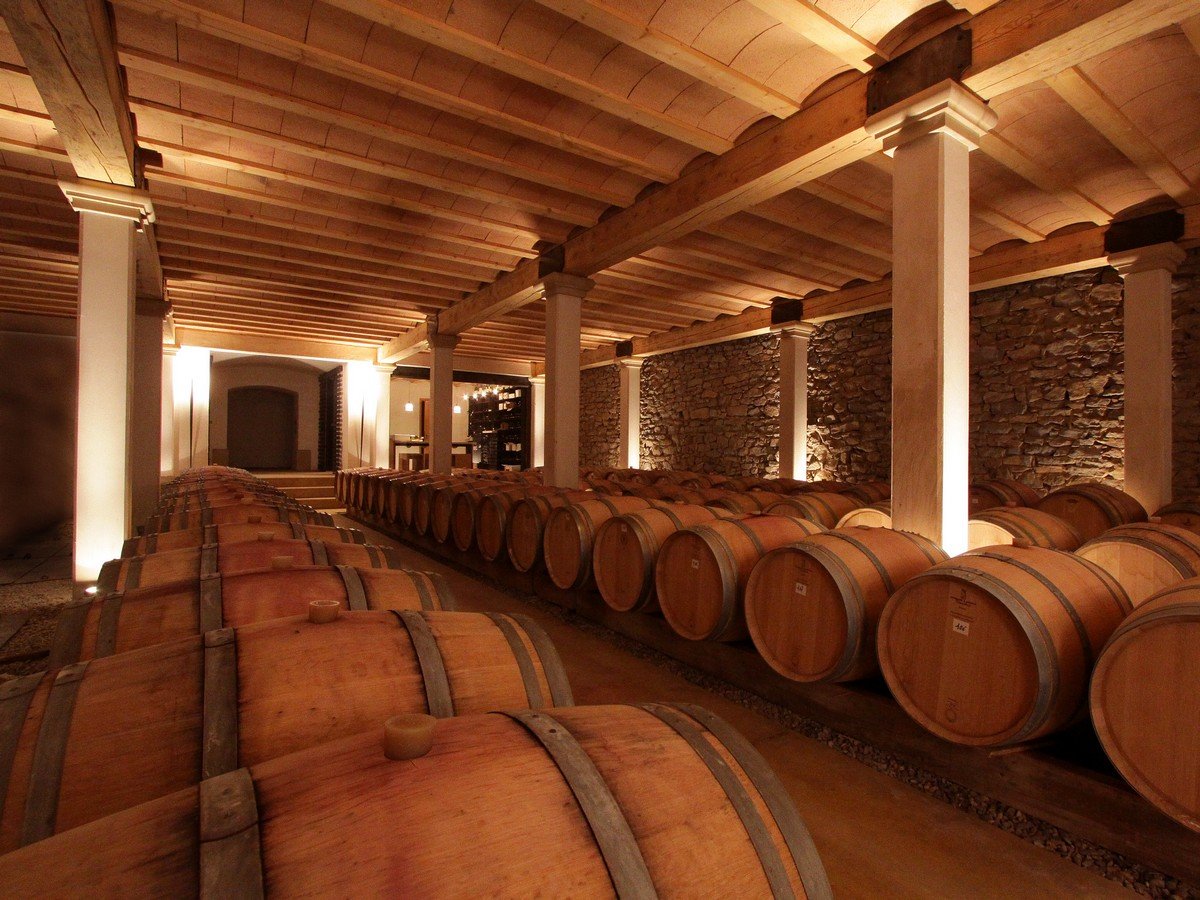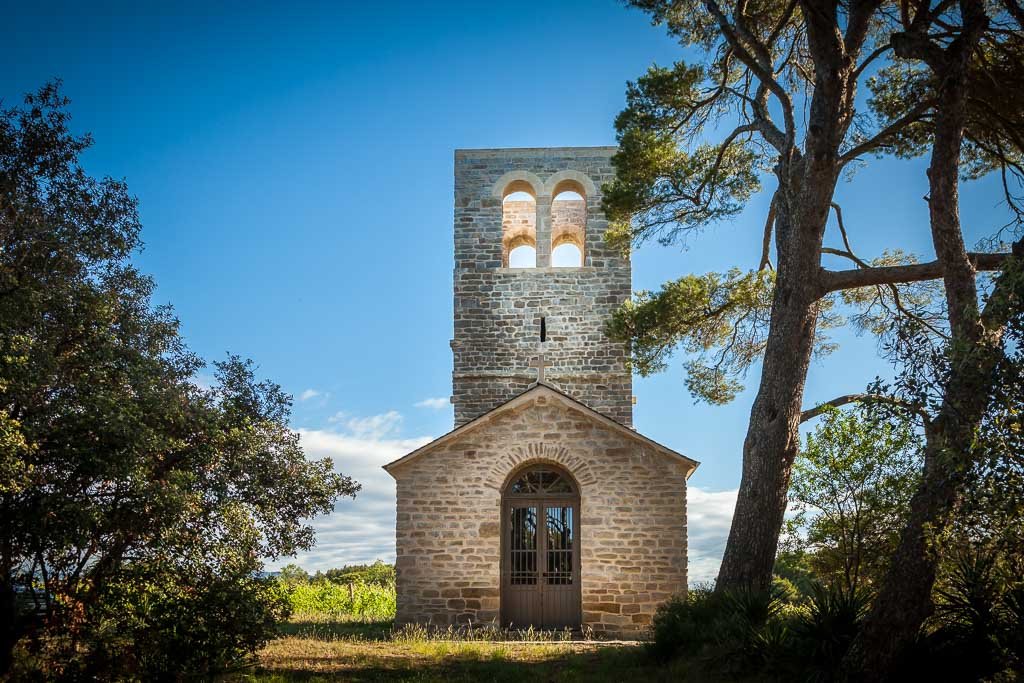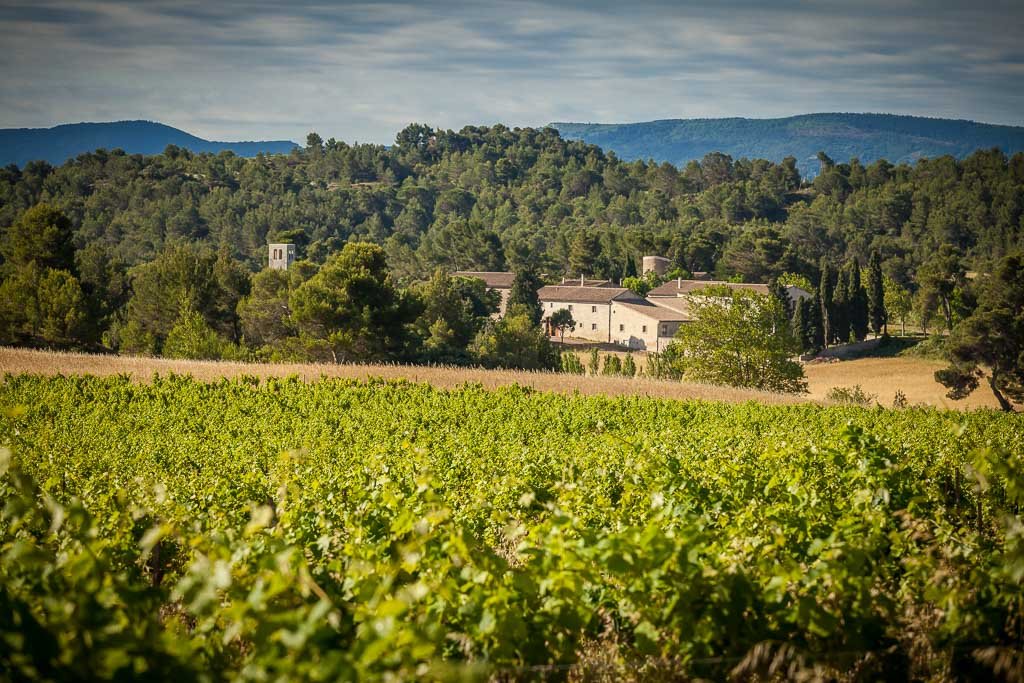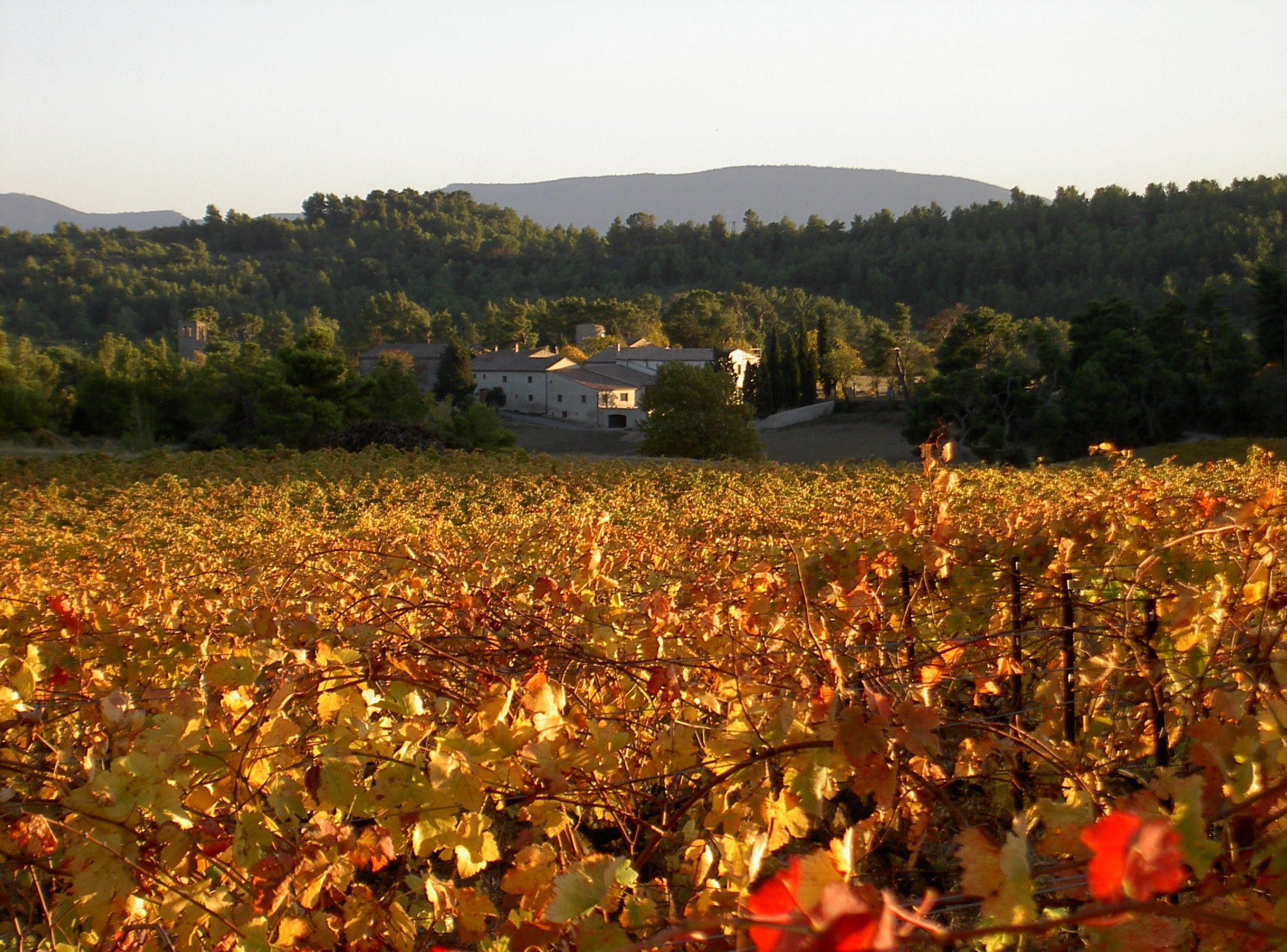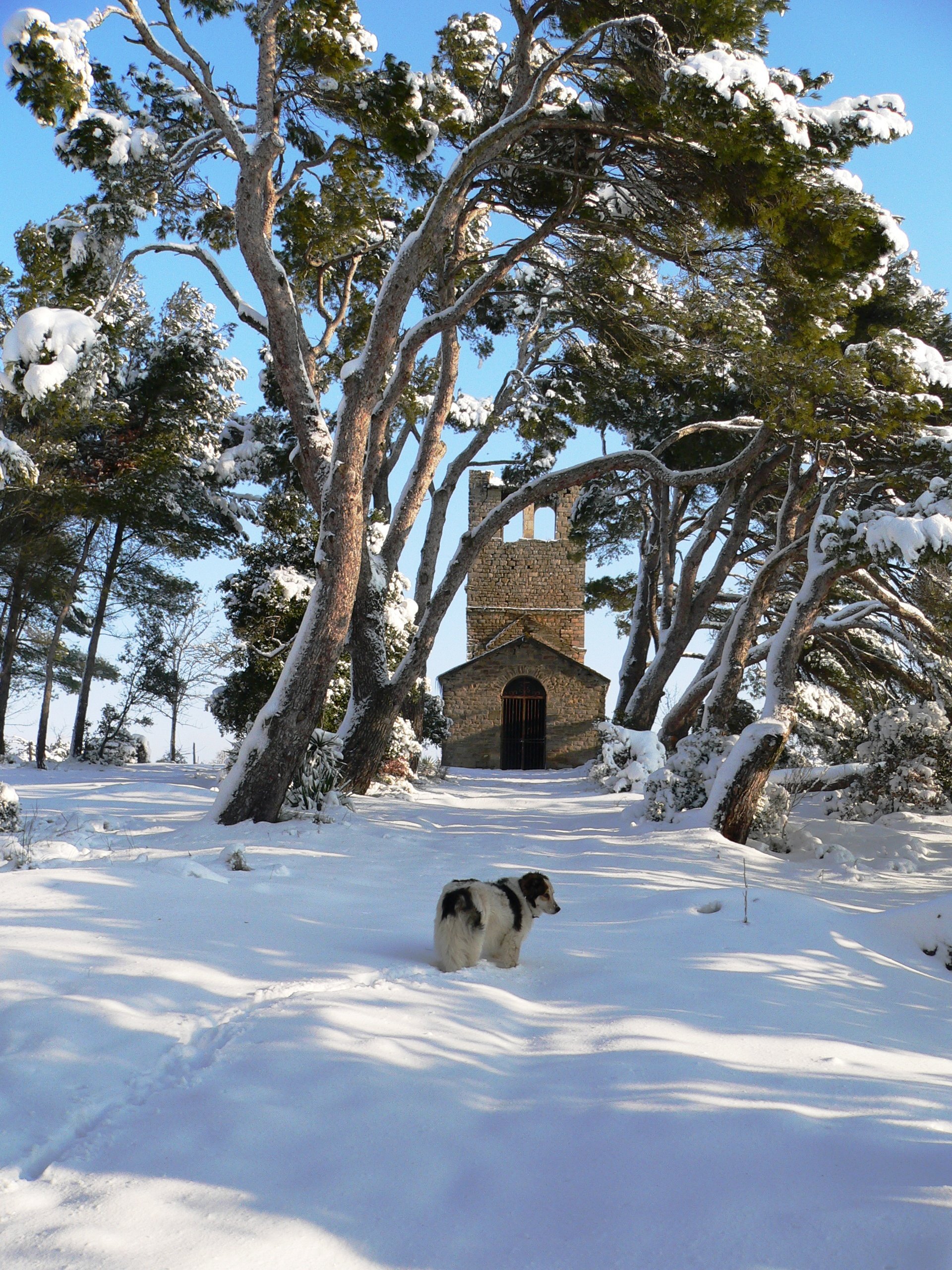France > Languedoc > Minervois > Saint Jacques d’Albas
Organic, Biodynamic Practices
The Medieval village of Minerve (courtesy BlueBreezeWiki)
Minervois
Minervois is a small appellation in western Languedoc tucked in along the border of the Departements of the Aube and Herault (pale pink on the map below, just east of the restored Medieval city of Carcassone).
Languedoc wine regions (click to expand).
The district is named for the village of Minerve, a Roman settlement expanded by the Viscounts of Minerve from the 8th Century forward and later further fortified by the Cathars who took refuge there after the massacres of the Albigensian Crusade. The Romans planted vines in the area some 2,100 years ago, and the area has been famed ever since, largely for its deep spicy red wines, although rose and white wines are produced as well.
AOC status was granted in 1985. The AOC regulations for the district are complex, and require the wine to be blends of at least 2 varieties. The red wines of the appellation are produced from Syrah and Mourvedre, Grenache and Lladoner Pelut (minimum 60% from these varietals in any proportion); and Carignan, Cinsault, Piquepoul, Terret, and Rivairenc (maximum 40% also in any proportion). In any case Syrah and Mourvedre needs to be at least 20% of total, and Piquepoul, Terret, and Rivairenc needs to be no more than 10%.
Syrah, Grenache, Mourvedre and Carignan dominate the blends, creating deeply spicy, complex wines.
The white wines, which are less commonly found, may include Marsanne, Roussanne, Maccabeu, Bourboulenc, Clairette, Grenache, Vermentino, Piquepoul and Muscat Blanc a Petits Grains.
Some of the Chateau’s vineyards
Syrah, the Nutters’ Belgian Shepherd
chateau saint jacques d’albas
St. Jacques would appear to have been founded in or before the Roman era, when an agricultural villa was built. Probably abandoned to or over-run by the Visigoths in the 7-8th Century (a tomb from this era has been found in one of the vineyards); it later appears to have become a priory on the route to St Jacques (ie James) de Compostelle route. At some later time the property assumed the name "Albars", the Occitan term for Willow trees. The first mention of the property in the historical record dates to 1437. The chapel, built in the 11th century and recently restored, lies at the convergence of several lay-lines, which may account for its isolated location away from the other buildings of the property.
From around 1800, the estate has concentrated on wine production, mostly selling high-volume varieties in bulk to the local cave cooperative. Since the 2001 purchase of the Chateau by Graham Nutter and his family, the focus has been on quality over quantity, and the estate’s wines are all Chateau-bottled.
Graham Nutter with son Andrew
The Nutters and their vineyard team have uprooted much of the Alicante and Carignan which dominated the vineyards in favor of Grenache and Syrah, and maintain a program of letting land cleared of the lesser varietals rest for 7 to 10 years before replanting to allow the soil to restore its bio-activity.
Woodland and the local scrub, the garrigue, cover about 2/3 of the estate, and the remaining 68 acres of vineyard are interspersed through the natural areas. The property also contains olive and fruit trees, several beehives, ponds dug to support wildlife, and along with tourism and an active schedule of musical concerts, the estate functions as a biodiversity reservoir and bird sanctuary.
Soils are a mix of clay and sandstone, with a highly diverse underlying geology. This gives significant variation to soil chemistry, and the family has taken advantage of careful soils analysis to select specific plots for a wide diversity of grape varieties, Syrah (37%), Grenache (23%), Mourvèdre (9%), Carignan (6%), Calladoc ( 4%) and Cabernet Sauvignon (2%). They have also added several white varietals (Marsanne, Roussanne, Vermentino, and Viognier), now covering some 19% of the vineyard area.
Farming and winery practices are all organic/biodynamic, and very low-intervention. The Nutters let the soils make the wines.
The Estate from the air, with the chapel at center.
Petit St Jacques Blanc (IGP Languedoc): A blend of Vermentino (a name recently restricted by EU regulation to Italian wines, so Rolle here) and Viognier, vinified and aged in stainless to preserve its fresh, floral fruit notes.
Petit St Jacques Rose (AOP Minervois): a crisp and elegant blend of Greneche, Mourvedre and sometimes a bit of Syrah, vinified in stainless steel to preserve the primary fruit notes. Bright and fresh with grapefruit and small berry notes. Good acidity. Pair with a summer salad.
Petit Saint Jacques (IGP Languedoc): a blend of Grenache, Syrah and Carignan, destemmed and vinified in stainless to preserve brilliance and freshness, followed by a short rest and bottling without use of oak. Bright and spicy with superb fruit and fine-grained tannins.
The wines
Albas Blanc (IGP Languedoc): The estate’s top white wine, a lush blend of Marsanne and Roussanne. Partially oaked, with notes of candied lemon and a lovely creaminess.
La Chappelle en Rose Minervois Rose: crafted from 80% Grenache, 10% Mourvedre and 10% Syrah. Short maceration in stainless followed by clarification and bottling. Lush and elegant with depth and persistence on the palate. Jancis Robinson said of this wine “I may buy some of this for myself!”
St Jacques “Albas” Minervois: Their flagship wine, 55% Syrah and 45% Grenache. Destemmed, fermented in stainless and then aged in a mix of new and 2nd year barriques to provide a velvety succulence.



